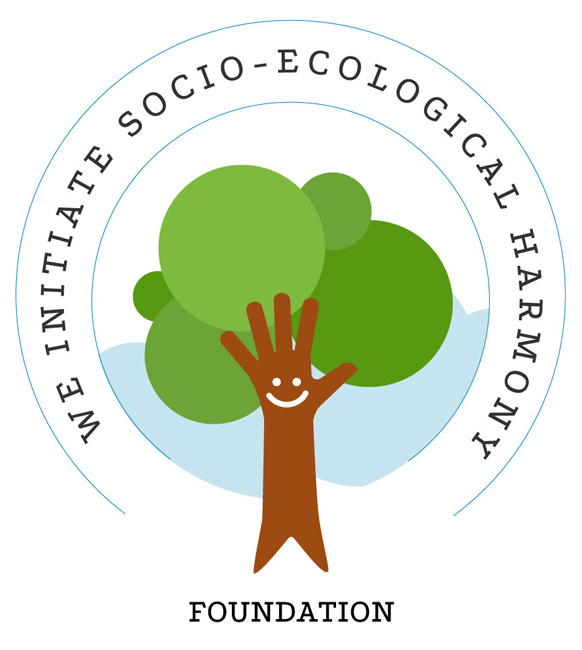The 2019 SAVE THE FROGS! World Summit was held at the Birla Planetarium in Kolkata, India on February 8th and 9th, 2019. Over 200 amphibian conservationists and frog enthusiasts from India, Bangladesh, Nepal and the USA attended this free event.
The SAVE THE FROGS! World Summit brought together amphibian biologists, environmental conservationists, teachers, filmmakers, journalists and artists to raise awareness for endangered amphibians and provide attendees with numerous ways they can assist threatened wildlife and ecosystems in their own communities upon their return home.
Over the course of two days, attendees got to meet and connect with other SAVE THE FROGS! supporters; hear enlightening and inspiring presentations on amphibian conservation; and attend workshops aimed at improving our ability to protect amphibian populations and succeed in our campaigns on behalf of the environment.


Feedback From The Participants
The best way for us to judge the success of the World Summit is by its impact on the participants…
“Yesterday’s seminar was extraordinary…it’s our fortune to become a part of this sacred work. We are always with you, and our small frogs.”
Amarttya Bagchi
Kolkata

“Thank you SAVE THE FROGS! Founder-Director Dr. Kerry Kriger for choosing Kolkata as the venue for SAVE THE FROGS! World Summit 2019 and partnering with WISH Foundation to organize the first ever world summit in India on amphibian conservation.The two-day event (February 8 and 9) at Birla Planetarium saw environmental conservationists, scientists, researchers, teachers, students from colleges and schools as well as artists from several countries come together to exchange their thoughts, ideas and opinions on the importance of amphibians and drive home the reason why we should pay all the attention on the dwindling numbers of frogs across the world.That the event was a major success in creating awareness and sensitizing people from different strata of the society is an understatement. Thank you Kerry once again for giving Kolkata and Bengal the opportunity to contribute towards conservation of frogs on a global scale.”
Sarbani Nag
WISH Foundation, Kolkata

“Well where I should start? This two day workshop gives huge memories. Firstly big thanks to Sarbani di and the Wish Foundation for arranging this workshop and running this so successfully. They did this amazingly.
And now for the big big thanks to SAVE THE FROGS! Founder and Director Dr. Kerry Kriger for initiating this. His experience in different parts of the world inspires all of us and the response gives us the positive courage for doing this..poems, arts by the children inspires many other students..it works like a chain..it’s my first time I experienced this kind of SAVE THE FROGS initiative..And the experience was Amazing.
For me it was a great opportunity to meet with amazing people and their work helps me to move forward, work hard and explore the world..I have learned a lot of things about frogs conservation, field study and more. And I must say that all of them are so cooperative, so friendly… It’s my huge pleasure to have guide, mentors like them..
A BIG THANK YOU FOR THE SAVE THE FROGS WORLD SUMMIT workshop and to Dr.Kerry, Dr.Sharma, Dr.Islam, Dr.Karthik, Sarbani di, Sneha di, Prosenjit Sir, Tiasa di, Sruti di, Vandana di, my friends and all the others…
BIG THANK YOU Kerry Kriger it’s my great pleasure to participate in the SAVE THE FROGS! workshop and connect with you..Want to participate in more and more SAVE THE FROGS! workshops all over the world and Kolkata again..You are an amazing person..Thank you for sharing ur work.”
Iptishamun Nesha
West Bengal, India
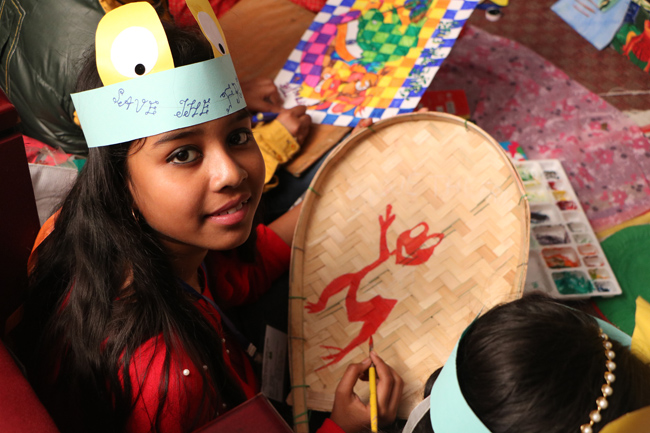
“Though I am a botany student, I am very glad to be part of this SAVE THE FROGS! family. It was this pleasant experience that made me an animal lover. And I promised that day, I will protect frogs at any cost. I am thankful to you sir, for giving me a chance to attend this awesome seminar.”
Muklesur Rahaman
Kolkata
“Hi. How are you brother??? World Summit of save the frogs programme was so amazing from what I have seen on social media…. Badly miss it… But appreciate you for this amazing arrangement.”
Mohiuddin Rifat
Sylhet, Bangladesh
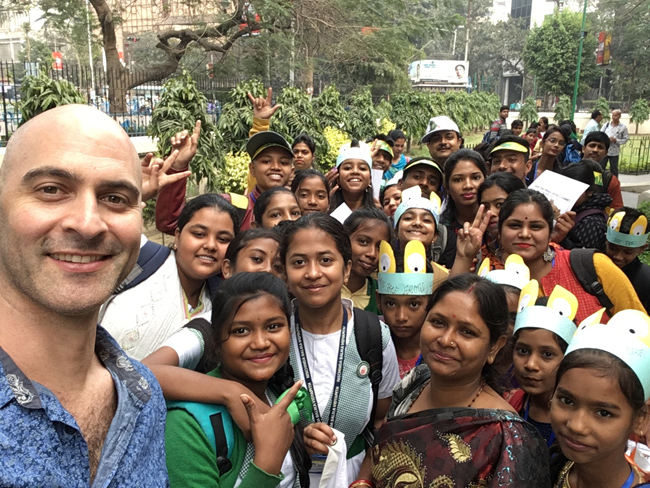
“Fully new experience and this day just brings more interest in zoology. I realised what exactly is zoology and wildlife conservation. With Dr. Kerry Kriger’s foundation, “SAVE THE FROGS! World Summit”, Dr. Vasudevan, Dr. K.K Sharma….we have learned a lot, a day well spent. In the conclusion of the event Dr. Kriger just nailed it with his excellent bansuri playing.”
Arpan Bose
West Bengal, India

Participating Institutions
The SAVE THE FROGS! World Summit attracted a broad sector of society, with participants from at least 36 institutions from India, Nepal, Bangladesh and the USA taking part:
- Asutosh College
- Badu Reptile Conservation Society
- Bangabasi College
- Behala College
- Calcutta University
- Durgapur Government College
- Kazi Nazrul University
- Earth Day Network
- EcoPublic Health Foundation
- IISER Kolkata
- Jagannath University, Dhaka
- Jogesh Chandra Chaudhuri College
- Mahiary Kundu Chaudhury Institution
- Naturemates
- Nepal Education Environment Center Pearl Academy
- Nischinda Valika Vidyapith
- Rahara Nibedita Art Centre
- Ramakrishna Mission Vivekananda Centenary College
- Ramakrishna Sarada Mission Sister Nivedita Girls’ School
- SAVE THE FROGS! USA
- SAVE THE FROGS! India
- Serampore College
- South Duillya High School
- South Zilla School
- Srishti Institute of Art, Design and Technology, Bangalore
- Shyampur Siddheswari Mahavidyalaya
- Society for Conservation GIS
- The Heritage School
- University of Bombay
- University of Dhaka
- Vidyasagar University
- Vijaygarh Jyotish Ray College
- West Bengal State University
- Wildlife Institute of India
- WISH Foundation
- Zoological Survey of India

“Sir it was an unforgettable moment for us and I was very happy to attend the SAVE THE FROGS! World Summit.”
Amir Sohel
Kolkata

![]()
SAVE THE FROGS! World Summit For Kids
On Saturday February 9th, 2019, over 100 students from ten local schools joined us for the SAVE THE FROGS! World Summit For Kids, a special two hour session dedicated exclusively to young students.
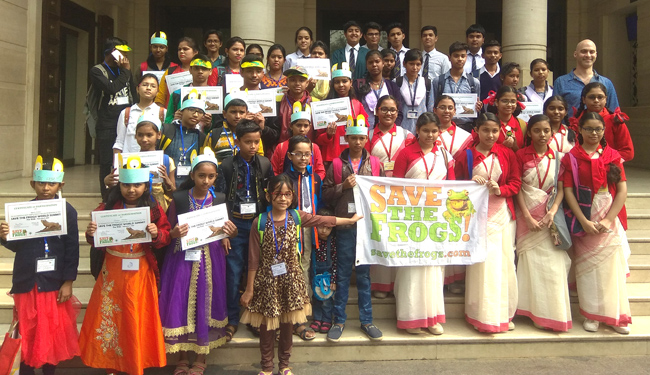

“They say good habits are best inculcated if practiced as a kid. And what joy it was for WISH Foundation to see a house full of children and young adults happily coming together for the special session tailor made for them at SAVE THE FROGS! World Summit 2019 held at Birla Planetarium on February 9 morning.Some came with hand-made creative head gears on the theme of the day. Some trooped in with beautiful artwork that reflected the message of amphibian conservation out loud. As Kerry Kriger, of SAVE THE FROGS! and Sarbani Nag of WISH Foundation took the stage to discuss frogs in a fun way (there was even a croaking activity that broke the ice), the kids started asking questions and also sharing with others how they had come across different species of frogs right in their backyard.Dr. Karthikeyan Vasudevan showed them a film based on the mysterious purple frog, endemic to Tamil Nadu which intrigued the kids to know more about amphibians. The orientation session was followed by a short quiz session and it was engaging. Why should frogs be saved? What are threatening their existence? What can we do in our limited individual capacity to help curb such threatening factors? Can we become a little more responsible? — such were the topics the children were spotted discussing animatedly after the session.And we were reassured that when they grow up these kids will be responsible citizens. That there’s not much to worry as long as such kids, hopefully more in numbers, keep getting sensitized and become the ambassadors of nature conservation.And for that to happen we, the adults, need to encourage our children to do so. Exactly the reason why WISH Foundation wants to extend a Big Thank You to all the schools and all the parents who send their students and children for the SAVE THE FROGS! World Summit.Thank you!”
Sarbani Nag
WISH Foundation, Kolkata



Thank You To These Generous Donors Whose Financial Support Made The World Summit Possible!
Educational events like these are only possible through the generous support of people like you who care about frogs and want to ensure a vibrant future of amphibious life on Earth. We thank the following donors for their financial support of the 2019 SAVE THE FROGS! World Summit in Kolkata:
- Lawrence Thompson
- Bonani Ghosh
- Kat Greene
- Ron Landskroner
- Rachel Presser
- Robert Keeley
- Dana Craig
- Maw Maw Tun
- Margaret Copeland
- Denise East
- Kathryn Morrow
- Megan Roemer
- Dana Craig
- Dr. Kerry Kriger
We encourage you to donate to help fund the future World Summits that we are planning! Thank you for your financial support!
“I see this meeting as an important investment in a future with frogs thriving as they rightfully should.”— Lawrence Thompson, World Summit Donor
“I heard about your SAVE THE FROGS! World Summit in Kolkata. I donated some parts of my pocket money. I do hope the summit will be very informative, interesting and cooperative for the future work. Actually, my native country is Myanmar (formerly Burma, near India and Bangladesh). Currently, I am studying in Czech Republic for my Doctoral study in Energy Engineering. Thank you and I do appreciate your time and work.”
Maw Maw Tun
Donor
“Hi Kerry, It was my pleasure to be associated with you. I would like to thank you for selecting Kolkata as a place for the STF! World Summit. The participants were enriched and took back home the message you wanted to give. The kids really enjoyed our session.”
Sarbani Nag
WISH Foundation, Kolkata


Thank You To The Speakers!
The 2019 SAVE THE FROGS! World Summit in Kolkata was a huge success in large part due to the speakers from India, Nepal, Bangladesh and the USA who shared their knowledge and experiences with the audience. The speakers, their affiliation and their presentation’s title and description are listed below.

Yellow-bush-frog (Raorchestes luteolus) photo courtesy Dr. KV Gururaja
Dr. Kerry Kriger
SAVE THE FROGS! Founder & Executive Director
Dr. Kriger gave multiple presentations throughout the World Summit, totaling approximately five hours:
- An Introduction to Amphibian Conservation
- A Brief History of SAVE THE FROGS! in India
- A Brief History of SAVE THE FROGS! in Bangladesh
- A Decade Of SAVE THE FROGS! Efforts In Nepal
- SAVE THE FROGS! Worldwide Efforts (Outside South Asia)
- The 2016 SAVE THE FROGS! Ghana Expedition
- The Wild World of Frogs (Kids Event)
- Succeeding In An Environmental Career (Open Discussion)
- Frog Poetry Recital
“Dear Kerry,Thank you for giving me the opportunity to join in the World Summit, Kolkata. Happy to meet with you. Specially fortunate to listen your sweet melodious flute. I think conservation effort should begins from home and I am really enriched from the speeches of the summit. Hope bright future of amphibians!! Warm wishes.”
Chiranjeeb Dey, Ph.D.Assistant Professor, Dept. of Zoology
Serampore College

Dr. Krishan Kumar Sharma
President, SAVE THE FROGS! India
Current status of diversity of frogs in India, major threats and conservation planningIndia being one of the mega-diverse countries of the world has good population of amphibians. But lack of documentation and ignorance has resulted in the loss of many species, and some are facing threats for their survival. My research group developed modern tools such as bioacoustics markers for their identification and monitoring. In 2010 we submitted complete documentation of amphibians in Central Aravali and the Thar Desert to Ministry of Science and Technology. We developed awareness for digital alternatives of frog dissection in many institutions in India. As President of SAVE THE FROGS! India I have conducted awareness programmes in different states of India and developed a team of dedicated volunteers.


“Dear Kerry:It was a pleasure attending the Save The Frogs World Summit. As Earth Day is on 22 April and this year’s theme is #ProtectOurSpecies, we would be happy to work with your coordinators to explore areas of common interest and ways to synergize our efforts around Save The Frogs Day. We would like to honour Professor Sharma and make him an EDN Star. My colleague will be getting in touch with him shortly. I look forward to our organizations collaborating for the good of our common heritage – Earth.”
Neela MajumdarSr. Manager Projects DevelopmentEarth Day Network, India

Dr. Kaushik Deuti
Zoological Survey of India
Biology, Threats and Conservation of Himalayan Salamander in the Darjeeling hillsTo conserve the Himalayan Salamander in the Darjeeling hills of northern West Bengal State of India, one needs to first understand the biology of the species (Tylototriton himalayanus). The species lives in the leaf litter of the coniferous forests and comes down to the small ponds and rain-water pools in the early part of the monsoon season where they breed and deposit eggs on the leaf blades of submerged aquatic plants. The larvae are bottom-dwellers feeding on various micro-crustaceans and insect larvae. They metamorphose by August and leave the pools as match-stick sized juveniles. Some larvae that cannot complete metamorphosis pass the freezing winter as over-wintering larvae. The adults feed on insects, crustaceans, molluscs etc on land and hibernate in winter, coming down to the same pools again during the next March. They do not migrate more than 50-100 meters and use the same breeding pools year after year. Due to reclamation and filling up of these pools and destruction of coniferous forests (habitat destruction) and building of roads and hotels, setting up of recreational parks, apart from water pollution, release of fresh-water carps and use of pesticides in tea gardens the species is facing acute problems for survival. Some simple and effective conservation measures are therefore being suggested for the continued survival of the species in the Darjeeling hills.
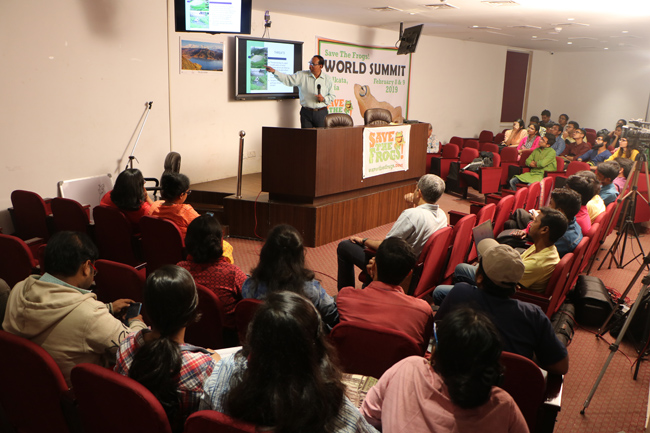

Dr. Karthikeyan Vasudevan
CSIR Centre for Cellular and Molecular Biology
Toads and roads don’t mix wellRoads are expanding rapidly and pose threat to movement and survival of several animals. I will provide compelling evidence on how roads can completely isolate populations and cause declines of toad population adjacent to roads.


Dr. Nurul Islam
SAVE THE FROGS! Bangladesh
Dr. Islam gave two presentations:- An Overview of SAVE THE FROGS! Bangladesh- An Introduction To Wildlife Diseases

Abdur Razzaque
University of Dhaka
Research and Conservation of Frogs of Bangladesh: Shortfall and EndeavourBangladesh harbors rich amphibian diversity including endemic species but despite the importance of knowledge of species diversity and conservation, quality empirical research is rather rare. However, extensive research focusing on taxonomy and identifying viable threats of frogs of Bangladesh is still in its infancy. This presentation will discuss the knowledge gap and efforts need to be taken to conserve the unique diversity of frogs in Bangladesh.
“Thanks a lot Kerry for arranging this summit and giving me the travel grant to attend this. It was a wonderful and life changing experience of my research career. Hoping to see you in Bangladesh next year. Cheers!”
Abdur RazzaqueDhaka, Bangladesh
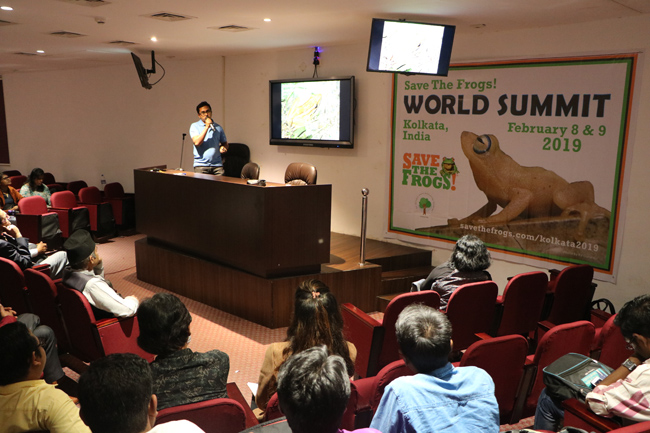
Bandana Adhikari
Environmental Graduates in Himalaya
Morphometric Comparison of Himalayan salamander (Tylototriton himalayanus) in Three Pokharis of Ilam District, Eastern NepalI will be presenting my Master’s Degree dissertation and highlight the history of Tylototriton and general biology of a Himalayan salamander. After that, I will brief about the morphological and genetic analysis of Himalayan salamander carried out in 2015 in Nepal. In addition, threats being faced by the salamanders and its importance in the ecosystem will be described. Thereafter, the objectives of the research and study area and the methods used in the study will be presented along with the results obtained and its analysis. Finally, I will narrow down with brief status of amphibians and research status in Nepal. I have many interesting photographs taken during the course of field work and I will be sharing it publicly at the end of the presentation.
“Thank you so much for everything you arranged in SAVE THE FROGS! World Summit, Kolkata. It was an amazing experience to get connected with you and other amphibian experts.”
Bandana AdhikariNepal

Shruti Sengupta
University of Tasmania
Crocodile Newts: The primitive salamanders of AsiaThe crocodile newts are one of the oldest lineages that contain many valid species and have diverged in the mountain ranges of South Asia during the collision of the Indian subcontinent with Eurasia and parts of Indochina (southern China, Laos, Thailand, Myanmar and Vietnam) and subsequent Pleistocene glaciations. In my presentation, I will talk about the distribution of this lineage in Asia. I will then focus on the Manipur population where I have done my work and will talk about its natural history, life cycle and threats. I will end the presentation with the current taxonomic status of the salamanders in India.

Sarbani Deb
WISH Foundation
Salamanders of Darjeeling HimalayasSalamanders are tailed amphibians which require a specific habitat to reproduce and continue their life cycle. India currently has two different species of salamanders from Darjeeling Himalayas and Manipur and Arunachal Pradesh. Earlier the Darjeeling population harboured Tylototriton verrucosus, which now has been described as a new species called Tylototriton himalayanus. They breed in the high altitude marshlands of Darjeeling during monsoon and spend the winter hibernating under soil. The marshlands of Darjeeling are experiencing multiple threats from rapid urbanization and other anthropogenic activities as most of these are outside protected areas. Awareness among local people who are sharing the same resources to live and Government policies are the need of the hour. My talk will be focused on the life cycle of the species, people’s way of thinking and threats observed.

“I would like to thank you for selecting Kolkata as a place for the STF! World Summit. The participants were enriched and took home back the message you wanted to give.There was a session for the kids at SAVE THE FROGS! World Summit organised by Wish Foundation in collaboration with SAVE THE FROGS!. More than ten schools participated and I am grateful to the Head of the Institutions who encouraged their students to be a part of the journey. The little ones croaked in concert!”
Sarbani NagWISH Foundation



Sneha Dharwadkar
WISH Foundation
Frogs Of The Imperiled LandscapeThis work was a part of the larger project of a baseline study to understand the flora and fauna of this region. I studied the presence of reptiles and amphibians in this region and found that there were 6 species of amphibians and 14 species of reptiles. All 6 species were frogs, no caecilians are distributed in this part of the country. Most of these amphibians were found close to agricultural fields and in seasonal ponds in monsoon in grasslands and marshes. Comparative studies could be conducted post the development of DSIR to monitor the change in the herpetofauna that the industrialization brings.
“The SAVE THE FROGS! World Summit held in Kolkata was one of the first such conferences that bridged the gap between the conservation professionals and general public, especially young students and, hopefully, future conservationists. The sessions conducted by the professionals were conveyed in a language that was easily understood by audience of any background.
Personally, I got a chance to interact with a lot of young students and that brings me a lot of hope for the future of amphibian conservation. SAVE THE FROGS! kindly provided me a travel grant for which I am grateful. I enjoyed the experience and looking forward to attend more such summits and contribute as much as I can. I would love to continue being part of SAVE THE FROGS!”
Sneha Dharwadkar
Amphibian BiologistWISH Foundation
Animesh Ghose
Society for Conservation GIS
Use of GIS in ConservationGeospatial analysis is an important key to understanding the health of a habitat for wildlife.Monitoring change in wildlife habitats is easy with GIS tool for managing, analyzing, and depicting statistical and geographic data. The presentation will highlight the core use of GIS in wildlife conservation fro other parts of World and how can we relate this with our problem.


“Thanks Kerry for this wonderful website. This is not just a simple website, it is a platform for us to recall our memory with the spirit for frog conservation. Best of luck for future endeavour.
Animesh Ghose
Member, Society for Conservation GISDhaka, Bangladesh

Mohammad Sabit Hasan
Jagannath University, Dhaka, Bangladesh
Saving Frogs in Bangladesh: Overview of Jagannath University Programs(1) Research: Our ongoing research works on amphibians. (2) Awareness: The awareness activities we conducted in several districts in Bangladesh.

Ashwika Kapur
Freelance Science & Natural History Filmmaker
Making films about frogs – a small story for a great causeWhen passion and drive fuse with talent and a nose for a story, any film can be made on any species, however great or small. Calcutta born Wildlife filmmaker Ashwika Kapur shares how she used her skill as a Science & Natural History Filmmaker to tell small budget stories on very small frogs to make a difference to the future of these remarkable little creatures.
“What a privilege to be speaker at the ‘SAVE THE FROGS! World Summit’ this weekend. Addressed a wonderful audience of Zoology Students and Scientists about the Art of telling Scientific Stories. Kerry Kriger, thanks for the amazing work you’re doing for these amazing little creatures!”
Ashwika Kapur
Wildlife Filmmaker, Kolkata







Frogging downtown Kolkata after the World Summit…we found jackals, a civet, a parrot, a tokay gecko and three frog species!
Travel Grant Winners
SAVE THE FROGS! is proud to have awarded $1,346 in Travel Grants to enable the World Summit participation of the following amphibian conservationists:
- Bandana Adhikari (Nepal)
- Krishan Sharma (India)
- Sneha Dharwadkar (India)
- Sneha Munot (India)
- Nurul Islam (Bangladesh)
- Animesh Ghose (Bangladesh)
- Abdur Razzaque (Bangladesh)
- Mohammad Sabit Hasan (Bangladesh)
SAVE THE FROGS! Travel Grants are made possible through the generous support of SAVE THE FROGS! Donors and Members. We request your financial support in order to grow our Grants program. We thank you in advance!
“Thanks a million Kerry for supporting my student (SAVE THE FROGS! Travel Grant Winner Sneha Munot). You made all the difference in her.”
Dr. KV Gururaja
Amphibian Biologist, Bangalore
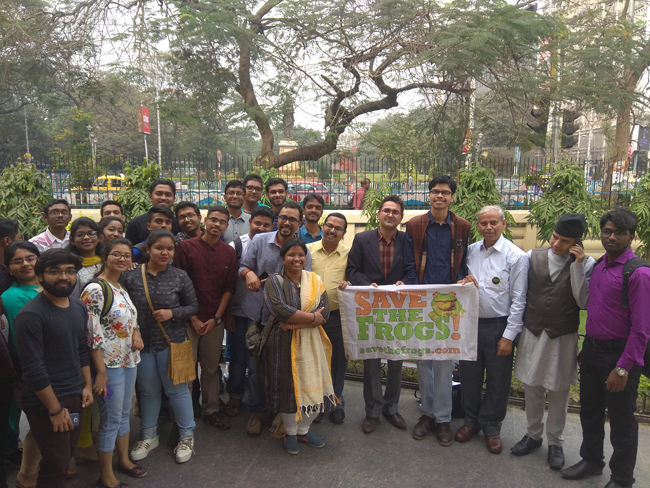


Making News In The Telegraph
The Telegraph is West Bengal’s most widely read English language newspaper, so were were happy to get visible coverage on both February 9th and 26th, 2019! We encourage you to download this high resolution PDF of the “Little warriors join frog fight” article, then read and share it.
“Congratulations Kerry, lets get three full pages, we deserve it, amigo! Proud of you and your contributions to the planet, happy to know you.”
Heath Rost
Personable Media, Colorado



Indian Classical Music at the World Summit
Participants not only learned about amphibians, but also got to enjoy Indian classical music at the conclusion of each day’s events, as well as frog songs from some of the Nepalese attendees.
“Sir, today’s event was so amazing, it’s our first experience in something like this. Your speeches and others’ speeches just make us so enthusiastic about this wildlife conservation, amphibian conservation. We want this event every year to happen. Thank you sir for making us interested. And at the last, your bansuri playing was excellent.”
Arpan Bose
West Bengal, India



The SAVE THE FROGS! World Summit featured musical performances by Dr. Kerry Kriger, Dr. Krishan Sharma and other participants.
Our Partners
The SAVE THE FROGS! World Summit was organized by:
“WISH Foundation was glad to have associated with this super initiative aimed at sensitizing the next generation about the importance of frogs and other amphibians in our lives. And what joy it was to see the infectious enthusiasm of these kids about nature and its unquestionable role in creating a better future for mankind.”
Sarbani NagWISH Foundation
Long-Term Impact of the World Summit
We hope that the impact of these two days goes far beyond Kolkata and extends far into the future. From the feedback we have received from participants, it certainly appears that the SAVE THE FROGS! World Summit has inspired many conservationists to go forth and spread the SAVE THE FROGS! message in their communities and countries.



Much of the long-term impact of the World Summit will undoubtedly be from the students who go on to become not only more ecologically conscious citizens but also environmental professionals.
“Dear Kerry,I really enjoyed the SAVE THE FROGS! World Summit and have learnt at least one of your frog calls. Here’s a call to partner for Earth Day 2019. Look forward to seeing how we can collaborate on programs this year.”
Neela Majumdar
Sr. Manager Projects DevelopmentEarth Day Network, India



“Dear Dr. Kriger,First of all we would like to congratulate you for the worldwide initiation for the conservation of frogs. It is indeed appreciable that we understand the significant role of the frogs for the ecosystem. I am feeling very proud to be a part of the World Summit in Kolkatam India. If you remember I had performed my frog song that was composed by me as well.Furthermore, I introduce myself that I am Hemang Raj Giri, professionally a freelance author, music composer, songwriter and social activist. I have been working in the leading position in various literature organizations of Nepal. When I came to know about your worldwide initiation for the conservation of the frogs, I was really impressed by you and I have been satisfied with your initiation that should be spread out over the world. So, today we organized a nine members’ working committee from different parts of Nepal. We want to organize a Nepal SAVE THE FROGS! chapter. Indeed we want to support you and your campaign. I hope you will reply with a detailed process that will guide us to register a Nepal chapter in coming days.
Hemang Raj Giri
Kathmandu, Nepal



SAVE THE FROGS! Founder Dr. Kerry. Kriger with Hemang Raj Giri, Toyanath Ghimire and Krishna Kharel of Nepal.



Promoting The Arts
A silent auction was held at SAVE THE FROGS! World Summit with frog-themed artworks handmade by children of Rahara Nibedita Art Centre. Art is invaluable and thus no price tag was there. World Summit attendees bought the artworks with a price they thought was right, based on what the kids deserve for their creative effort in spreading the message of amphibian conservation across the society. The generous amount generated through this silent auction was used to buy art supplies for the children. Later, members of WISH Foundation gifted water colours, brushes, and crayons to the children at their art class. Here is a glimpse of the moments…

Members of WISH Foundation visit Rahara Nibedita Art Centre to deliver art supplies funded through the silent auction that took place during the World Summit.

The Rahara Nibedita Art Centre has been participating in the SAVE THE FROGS! Art Contest since 2010. SAVE THE FROGS! has awarded three Save The Frogs Day Grants to the school, totaling $790, to support their artistic efforts and celebration of Save The Frogs Day.
If You Thought This Page Was Super Awesome
Thanks for your interest in the SAVE THE FROGS! World Summit. If you got this far down the page, you must love our amphibian conservation efforts, in which case we encourage you to donate to SAVE THE FROGS! or become a SAVE THE FROGS! member.
Your financial support makes all the difference!
You can find the original SAVE THE FROGS! World Summit Kolkata registration page here.






